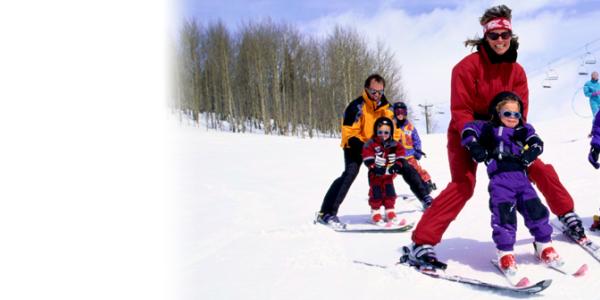
Winter snow sports are a favorite pastime for families, students and novices alike, but they can also put people at risk for moderate to severe injury. When you’re out having fun and speeding down slopes, even the smallest oversight or mistake can be fatal.
Plan Ahead
- Look up weather conditions ahead of time. It’s good to know not only for your plans on the slopes, but also for your drive there.
- Find a buddy. Getting lost and unexpected injuries could be made worse by being on your own. Make sure someone is with you at all times or make your whereabouts known to others.
- Know the slopes. Look at a map beforehand or keep one with you so that you are aware of ski run difficulty levels, possible closures or construction areas, and nearby ski patrol stations.
Get Your Gear
- Find the right fit. Do your research and pack, rent or purchase the proper gear and clothing for your needs. Try everything on first!
- Check your equipment. “Why isn’t my helmet strap closing,” is not a question you want to ask at the top of a hill. Check all gear, including goggles and bindings, before you take off.
- Wear a helmet. A helmet will protect your head and lower your risk of concussion in the case of a fall or accident.
Warm Up
- Do your stretches. No matter the season or experience level, it’s key to warm up before you hit the slopes. Stretching will get your joints moving and prevent injury, especially in colder weather.
- Stay warm. Muscles and tendons feel stiffer in the cold and are prone to seizing up. Stiff muscles can result in tendon and ligament injuries, so it’s important to keep your body moving.
- Wear layers. Moisture-wicking clothing will absorb sweat and dry faster, keeping you warmer longer.
Fuel Your Body
- Adjust to the altitude. Prepare your body for higher hills by getting a good night’s sleep and watching your alcohol intake. Wear sunscreen and reapply often, since you are closer to the sun in higher altitudes.
- Drink water. People often get dehydrated during winter sports season, as the colder weather tricks your body into thinking it doesn’t need as much water. Staying hydrated can also help your body adjust to higher altitudes.
- Pack snacks. You burn calories and expend a great amount of energy when constantly moving outside and on hills. You can maintain blood sugar levels by stopping for snacks and drinks throughout the day.
Know Common Mistakes
- Ruptures of the anterior cruciate ligament (ACL) can result from an awkward landing or even in the case of no contact, as in sudden stops or changes in direction.
- Wrist injuries and shoulder dislocations often occur when snowboarders fall down or land with their arms out or back.
- Crashes happen when people are skiing or snowboarding too fast, aren’t paying attention to their surroundings, or due to inexperience.
- Concussions are serious and should be treated immediately. If you think you may be concussed after a crash, tell ski patrol right away. Moving while concussed puts you at risk for secondary injury.
Know Your Limits
- Practice makes perfect. People often go out and ski and snowboard when they haven’t in a while, and eagerness can lead to accidents if you’re unprepared or out of practice.
- Be honest about your experience level. If you’re not comfortable with a larger hill, try an easier run. Harder runs mean higher speeds and more intensity.
- Pay attention to your body. Don’t push through pain or fatigue. Being patient and listening to your body can help prevent overexertion or accident.
Individuals, groups and families go to the snow with different plans, expectations and experience levels. Make sure you have emergency contact information available, and do some research prior to your trip. Planning ahead and taking the necessary precautions will help keep you safe and ensure you enjoy a memorable and accident-free day on the slopes.

